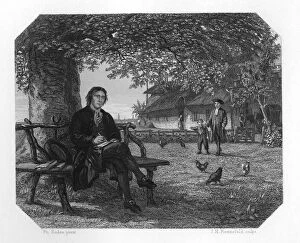Jh Rennefeld Collection
JH Rennefeld: Capturing the Essence of Dutch History Step into the past with JH Rennefeld
All Professionally Made to Order for Quick Shipping
JH Rennefeld: Capturing the Essence of Dutch History Step into the past with JH Rennefeld, a talented artist who beautifully depicted significant moments in Dutch history. From renowned philosophers to influential statesmen, his artworks provide a glimpse into the rich cultural heritage of the Netherlands. In one masterpiece, titled "Hubert Kornelisz and Justus van Effen, " Rennefeld transports us to the 17th century, showcasing these two prominent figures engaged in deep conversation. Their intellectual exchange is palpable as their expressions convey profound thoughts and ideas. Another captivating piece by Rennefeld portrays an iconic handshake between Cornelis Tromp and Michiel de Ruyter. This historical event symbolizes unity and cooperation among Dutch naval heroes during that era. Rennefeld also pays tribute to Benedict Spinoza, a brilliant philosopher whose revolutionary ideas challenged societal norms. Through intricate brushstrokes, he captures Spinoza's contemplative gaze, hinting at the depth of his philosophical musings. The artist further delves into scientific brilliance with his portrayal of Christiaan Huygens. As a mathematician, astronomer, and physicist, Huygens made groundbreaking discoveries that shaped our understanding of the universe. Rennefeld's artwork reflects Huygens' dedication to unraveling nature's mysteries. Johan de Witt takes center stage in another remarkable creation by Rennefeld. The Dutch statesman exudes authority and wisdom as he navigates complex political landscapes during turbulent times in history. Rennefeld also immortalizes pivotal moments such as "An audience with the council of mayor and aldermen of Amsterdam. " This painting showcases power dynamics within local governance while highlighting Amsterdam's importance as a hub for commerce and politics during this period. Jacob van Campen is celebrated through artistry as well; his contributions as an architect are showcased alongside his artistic prowess from the Golden Age—a testament to Van Campen's versatility and talent.













